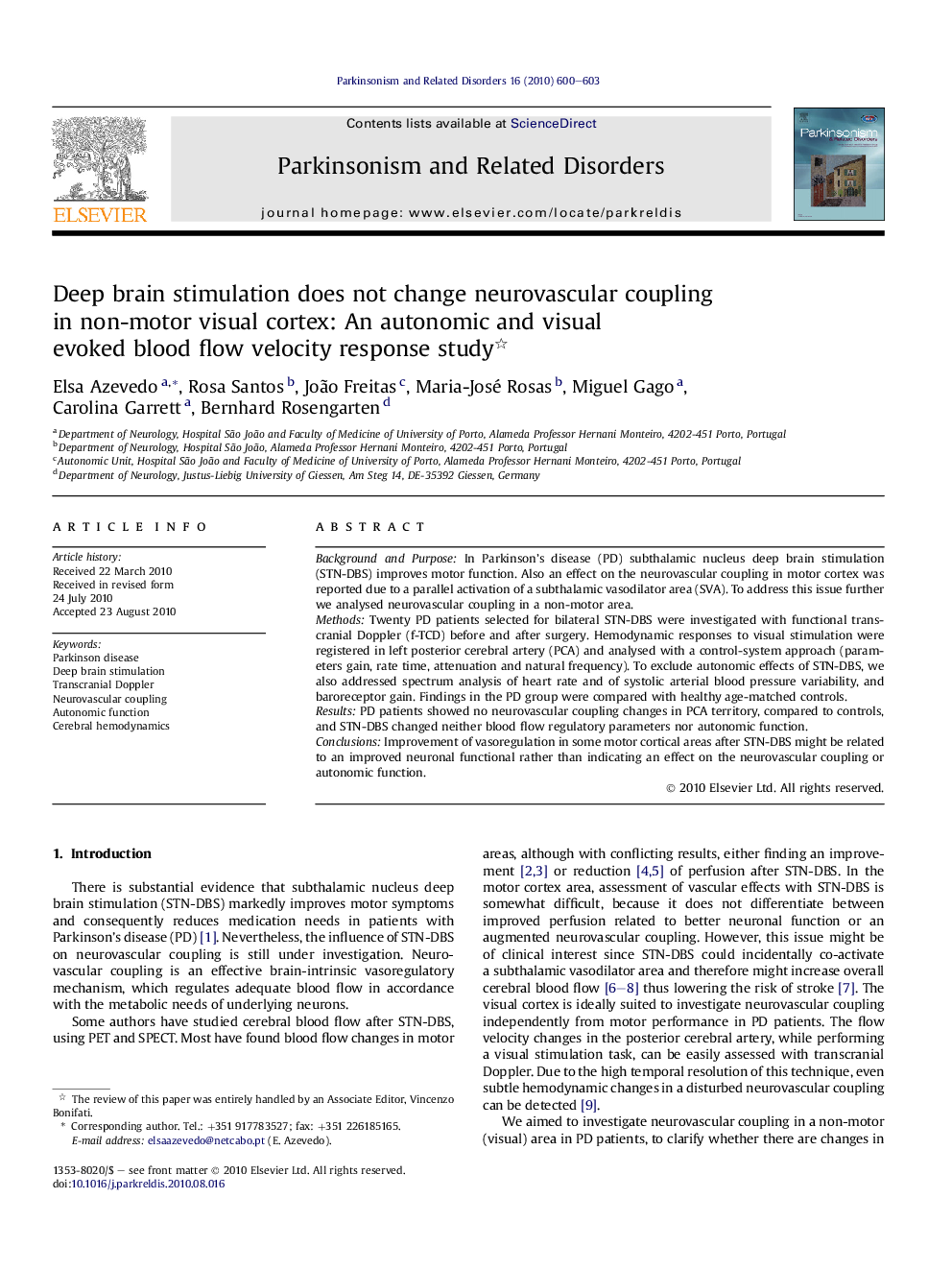| Article ID | Journal | Published Year | Pages | File Type |
|---|---|---|---|---|
| 1921136 | Parkinsonism & Related Disorders | 2010 | 4 Pages |
Background and PurposeIn Parkinson’s disease (PD) subthalamic nucleus deep brain stimulation (STN-DBS) improves motor function. Also an effect on the neurovascular coupling in motor cortex was reported due to a parallel activation of a subthalamic vasodilator area (SVA). To address this issue further we analysed neurovascular coupling in a non-motor area.MethodsTwenty PD patients selected for bilateral STN-DBS were investigated with functional transcranial Doppler (f-TCD) before and after surgery. Hemodynamic responses to visual stimulation were registered in left posterior cerebral artery (PCA) and analysed with a control-system approach (parameters gain, rate time, attenuation and natural frequency). To exclude autonomic effects of STN-DBS, we also addressed spectrum analysis of heart rate and of systolic arterial blood pressure variability, and baroreceptor gain. Findings in the PD group were compared with healthy age-matched controls.ResultsPD patients showed no neurovascular coupling changes in PCA territory, compared to controls, and STN-DBS changed neither blood flow regulatory parameters nor autonomic function.ConclusionsImprovement of vasoregulation in some motor cortical areas after STN-DBS might be related to an improved neuronal functional rather than indicating an effect on the neurovascular coupling or autonomic function.
